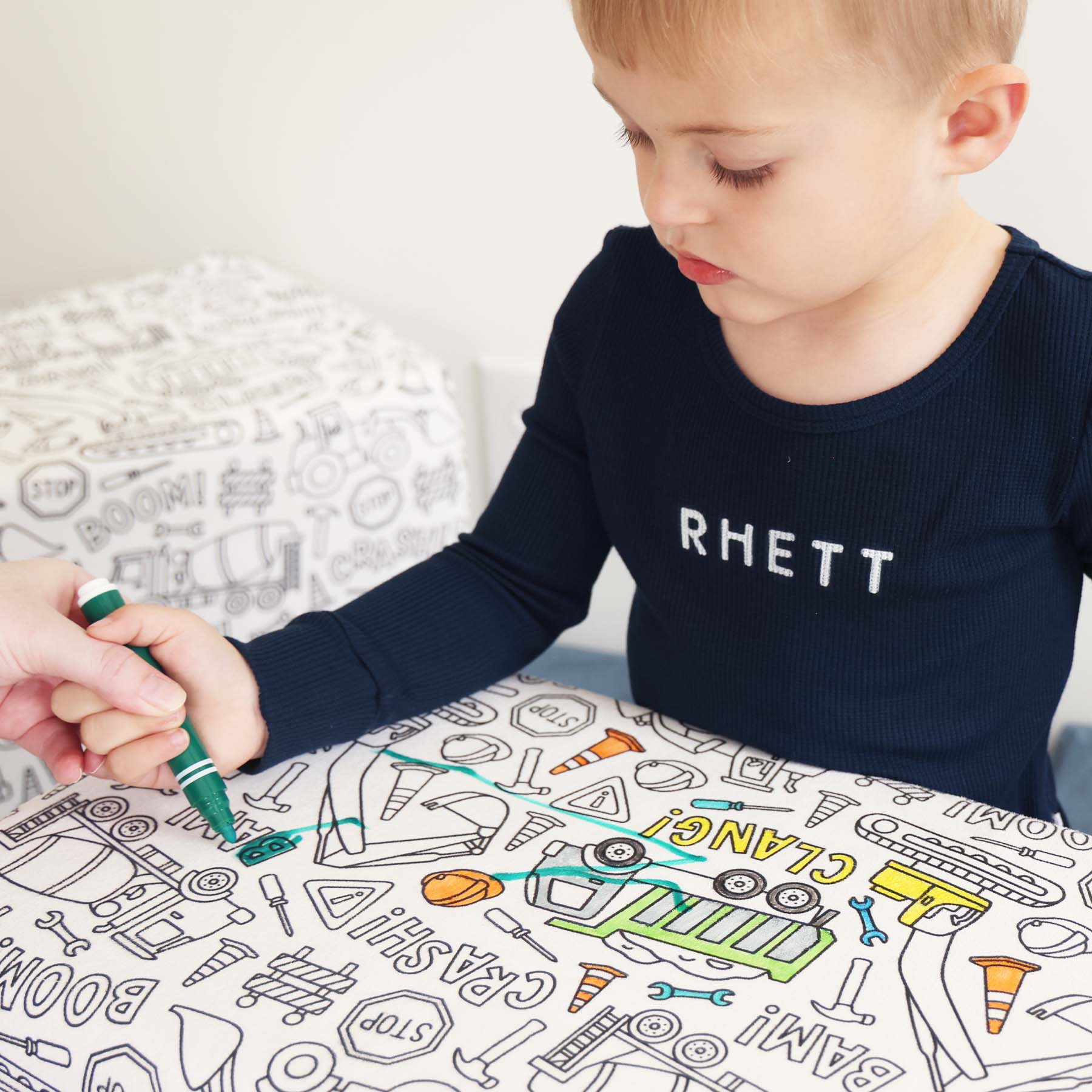Transitioning from traditional techniques to gentle parenting can be daunting. How do you discipline with empathy and set boundaries based on understanding and respect? This approach goes beyond avoiding harsh punishments, focusing on positive influence and cooperation. Our detailed examination of gentle parenting offers everything from foundational principles and contrasts with conventional methods to actionable tips for everyday parenting challenges. Begin your journey towards a more nurturing and connected family life.
Key Takeaways
-
Gentle parenting emphasizes empathy, respect, and setting boundaries without using fear or punishment, promoting happier and more confident kids.
-
It contrasts with traditional parenting by encouraging open dialogue, understanding, and self-motivated behaviors, rather than strict obedience and punishment.
-
Integrating gentle parenting with Montessori education supports child-centered learning and hands-on activities in a nurturing environment, fostering independence and respect.
Gentle Parenting Principles

Have you ever wondered if there’s a way to parent that feels more natural, more in tune with your child’s needs? The gentle parenting philosophy may be your answer. This modern method of connecting with kids focuses on guiding them through decision-making without using threats or rewards. It’s a parenting style that consists of four main elements—empathy, respect, understanding, and boundaries—which serve as guides to raising happy, confident children.
Embracing open and respectful communication bolsters the child-parent bond. This includes active listening and validating children’s feelings. Recognizing your children as individuals with their own thoughts and preferences is another key aspect of gentle parenting.
Empathy
Empathy lies at the heart of the gentle parenting philosophy, as it allows you to connect deeply with your child’s feelings and needs. When you empathize, you’re not just comforting your child; you’re teaching them about their own abilities to recognize and respond to emotions—both theirs and others’.
This mindful parenting approach revolves around using empathy as a teaching tool for children to understand emotional consequences. This helps them to become aware of the impacts of their behaviors. As parents model empathetic behavior, they set valuable examples for future social interactions and emotional regulation in their children.
Respect
In the realm of gentle parenting, respect is not a one-way street; it’s a shared path that involves modeling respect for the child and respecting their feelings and development. Recognizing your children as individuals with their own thoughts, feelings, and identities is a core aspect of this respectful parenting approach. When you show respect for your children, not only do you foster their self-respect, but you also lead them toward healthier choices and better self-care.
Respectful communication flourishes when the words chosen convey love, encouragement, and understanding, rather than criticism.
Understanding
A key facet of gentle parenting is understanding your child’s developmental stage. This knowledge ensures that your responses to their behaviors are appropriate and supportive. When faced with problematic behaviors, the aim is to understand the underlying reasons, guiding children towards making better choices instead of relying on fear of punishment. It’s about recognizing the reasons behind a child’s behavior, offering comfort during emotional distress, and maintaining an emotional connection, which all enforce boundaries in a gentle manner.
Seeing things from your child’s point of view enhances mutual understanding, fostering effective communication, stronger relationships, and positively impacting your child’s development.
Gentle Parenting vs. Traditional Parenting

The gentle parenting philosophy strikes a contrast with traditional parenting by prioritizing:
-
empathy and understanding over authority and punishment
-
natural consequences that help children understand the results of their actions
-
communication characterized by active listening and the validation of the child’s feelings
This contrasts with the directive communication often seen in traditional parenting.
Gentle parenting encourages:
-
Open dialogue
-
Collaborative problem-solving
-
Developing emotional intelligence and self-motivation
-
Placing a higher value on the long-term development of children’s decision-making and self-regulation
This approach provides a stark contrast to the more hierarchical dialogue and strict rule adherence of traditional parenting.
Discipline
Discipline within the gentle parenting philosophy uses positive techniques and natural consequences instead of the traditional approach of punishments. This parenting style eschews fear, control, and physical punishments, using empathy to guide behavior instead. Mistakes made by parents are seen as opportunities to teach children about acknowledgment and adaptation of behaviors in future scenarios.
When enforcing boundaries, gentle parenting favours a patient, guiding approach over authoritative demands.
Communication
Unlike traditional parenting, which expects children to obey without question, gentle parenting encourages two-way communication, fostering dialogue and respecting the child’s input.
Clear and concise language is used, steering clear of sarcasm, shaming, or verbal abuse, making discipline about guidance and encouraging collaborative problem-solving.
Expectations
Gentle parenting adjusts expectations by focusing on setting realistic behavior standards. This approach emphasizes:
-
self-awareness
-
the cultivation of a child’s ability to be self-motivated and self-regulating
-
setting rules and boundaries with understanding and flexibility
-
allowing children to develop decision-making skills
-
ensuring that expectations are understandable and meaningful.
Integrating Montessori Education with Gentle Parenting

The gentle parenting philosophy finds a strong ally in Montessori education, as Montessori believed in prioritizing the child as the center of their own learning and development. Both advocate for education that goes beyond academic achievement. Most Montessori schools, with their Montessori classrooms, foster social harmony and focus on interactive environments with hands-on exploration, promoting autonomy also essential in gentle parenting.
Academic skills are introduced through pretend play and special materials at a montessori school, supporting the ethos of engaging education. The principle of freedom within limits in Montessori education, as advocated by the Association Montessori Internationale, complements gentle parenting’s approach of respectfully setting thoughtful boundaries.
Child-Centered Learning
Child-centered learning in Montessori education emphasizes:
-
Individual development
-
Self-directed work
-
Valuing the child’s development and spirit
-
Offering a nurturing environment conducive to knowledge-seeking when the child is ready
-
Montessori materials focus on single concepts
-
Self-correction features that encourage independence.
Multi-age groupings in classrooms, designed for children ages, allow for peer learning and mastery reinforcement. And uninterrupted work periods help students develop at their own pace, fostering deep concentration and assimilation of information.
Hands-On Activities
Hands-on activities in Montessori education engage children effectively and promote a deeper comprehension of concepts. Actions performed by the hands reinforce memory and learning, as Dr. Maria Montessori emphasized. These hands-on experiences help children convert sensory input directly into knowledge, allowing them to explore various problem-solving approaches.
Excitement from hands-on, sensory experiences prevents boredom and keeps children interested in learning. Tactile materials like beads and wooden numbers transition from physical manipulation to abstract understanding. And through tasks like sweeping and painting, children develop fine motor skills, enhancing learning progress and memory retention.
Nurturing Environment
A nurturing and supportive environment is at the core of both gentle parenting and Montessori education, encouraging children to explore and learn at their own pace. Positive reinforcement and encouragement are used to motivate children and affirm their positive behaviors. Children are expected to take responsibility for their actions and learn from their experiences within a safe and structured environment.
The integration of gentle parenting techniques within the Montessori classroom fosters an atmosphere where trust, respect, and empathy are fundamental to the child’s overall development. This is why a teacher training program focused on these principles is essential for creating such an environment.
Tips for Implementing Gentle Parenting Techniques

If you’re considering gentle parenting, or maybe you’ve already started, you might be looking for some actionable advice to help you along the way. Here are some tips to consider:
-
Focus on the action rather than the person
-
Model kindness
-
Invite cooperation
-
Encourage positive behavior as part of everyday life
-
Establish a family routine with activities like family meals or bedtime stories
These practices contribute to a nurturing environment conducive to becoming a gentle parent through intentional parenting.
Practicing active listening ensures that your child feels heard and their emotions validated. Moreover, use positive reinforcement and encouragement as tools to guide your child’s behavior, instead of resorting to punishment or harsh criticism.
Mindful Communication
Mindful communication includes active listening, being fully present, and using supportive language. Being fully present in conversations, by eliminating distractions, fosters open and honest communication with the child. Practice reflective listening by paraphrasing and summarizing what the child says, demonstrating that their thoughts and feelings are valued.
Support your child’s emotional growth and well-being by:
-
Understanding and acknowledging their emotions in the moment
-
Opting for language that expresses love, encouragement, and understanding
-
Offering non-judgmental guidance instead of resorting to criticism
-
Paying attention to non-verbal cues to ensure the message delivered is supportive and consistent.
Setting Boundaries
Setting boundaries in gentle parenting involves clear expectations, consistency, and thoughtful enforcement. Clearly defined boundaries respect the child’s need for structure while offering the necessary support and protection. Setting clear boundaries helps children feel safe and ensures they understand the expectations placed upon them. Boundaries should be set mindfully, focusing on values and expectations that are genuinely important to the parent and realistically minimal.
When discussing boundaries with children, use age-appropriate methods such as stories, discussions, or visual aids like posters to facilitate understanding. Maintaining consistency in enforcing boundaries is key to preventing confusion and problematic behaviors in children. Parents modeling the adherence to their own rules is essential to avoid sending contradictory messages regarding behaviors and values. Establishing firm boundaries without relying on yelling or repetition can be challenging, and requires setting up logical consequences within a non-shaming framework.
Modeling Behavior
Modeling behavior in gentle parenting teaches children positive traits through parental actions and accountability. To encourage positive traits like:
-
honesty
-
respect
-
healthy living
-
a strong work ethic
Gentle parenting advises parents to exhibit these behaviors themselves. Consistent modeling of desired behavior by parents, such as following their own rules, is crucial to avoid sending mixed messages and ensure that children learn effectively.
When parents make mistakes, they have the opportunity to model accountability and adaptive behavior, teaching children to do the same.
Overcoming Challenges in Gentle Parenting

Like every parenting method, gentle parenting presents its own challenges. It is essential to maintain calm and regulate your own emotions, particularly when a child is misbehaving or acting aggressively.
Changing Mindsets
Reflect on your own childhood experiences and consider how they may shape your current parenting methods, adjusting them to better match gentle parenting principles. Introspection involves assessing not just your actions but also the motives behind them to ensure they align with the empathetic, respectful ethos of gentle parenting.
Support in adopting gentle parenting can stem from:
-
Rethinking your personal upbringing and determining whether to replicate or reject certain practices
-
Empathy in parenting, which leads to children developing better social skills and having fewer emotional and behavioral issues as they grow
-
A deficiency in parental cognitive empathy, which is often linked to a reduction in children’s social abilities and an increase in their emotional and behavioral challenges.
Maintaining a gentle parenting approach begins with identifying and managing emotional triggers that could lead to a loss of patience or the emergence of anger.
Managing Expectations
Transitioning to gentle parenting requires patience, recognizing that both parents and children need time to adapt to managing emotions and setting boundaries. Children’s unique psychological profiles and development rates must be considered in gentle parenting, necessitating personalized approaches to expectation management.
In the context of gentle parenting, consistency is fundamental in setting and managing expectations, which aids children’s understanding and adaptation to this approach. It’s important to note that while gentle parenting emphasizes partnership and understanding, it also necessitates clear expectations and disciplined boundary-setting.
Seeking Support
Parenting, especially the gentle parenting approach, isn’t a solitary journey. Support groups, both in-person and online, can play an instrumental role for parents practicing gentle parenting by providing a space to:
-
Discuss challenges
-
Celebrate successes
-
Share insights with those who have successfully transitioned to gentle parenting
-
Provide encouragement and practical strategies
-
Engage with a community of gentle parenting advocates
-
Dispelling misconceptions
-
Provide a network of encouragement and shared knowledge.
Pediatricians and qualified therapists can offer tailored advice and resources to families exploring gentle parenting, and books by experts like Sarah Ockwell-Smith and Shefali Tsabary can deepen parents’ understanding and guide their gentle parenting practice. Parenting classes and online communities educate parents on gentle parenting and introduce new strategies, helping to clarify common misconceptions about gentle parenting, such as the belief that it lacks discipline or structure.
Summary
We’ve journeyed through the heart of gentle parenting, exploring its principles, comparing it with traditional methods, and illustrating how it aligns with Montessori education. At its core, gentle parenting is about nurturing a child’s development through empathy, respect, understanding, and mindful communication. It’s about setting boundaries in a thoughtful, consistent manner and modeling positive behavior. And when challenges arise, it’s about having the patience to manage expectations and seeking support from a like-minded community. As you continue your parenting adventure, remember that gentle parenting isn’t just a style—it’s a pathway to raising happy, confident children equipped with emotional intelligence and the ability to self-regulate. May your journey be filled with understanding, growth, and the gentlest of moments.
Frequently Asked Questions
What are the cons of gentle parenting?
Gentle parenting emphasizes emotional validation but can lead to a lack of structure and discipline for children. Critics argue that it may also lead to canned responses that hinder a child's natural communication abilities.
What are the three C's of gentle parenting?
The three C's of gentle parenting are connection, communication, and consistency. These practices help build a strong connection with your child, encouraging positive behavior.
What is the difference between gentle and permissive parenting?
Gentle parenting focuses on using discipline as a teaching tool, while permissive parenting involves avoiding discipline altogether, leading to unclear or absent boundaries between parent and child.
Does gentle parenting mean no discipline?
No, gentle parenting still includes collaborative discipline focused on teaching, with boundaries and limits in place to maintain control.
What is the essence of gentle parenting?
Gentle parenting is all about understanding, respecting, and communicating with children in a nurturing and empathetic way, without using harsh discipline. It's about creating a positive and supportive environment for children to thrive.

